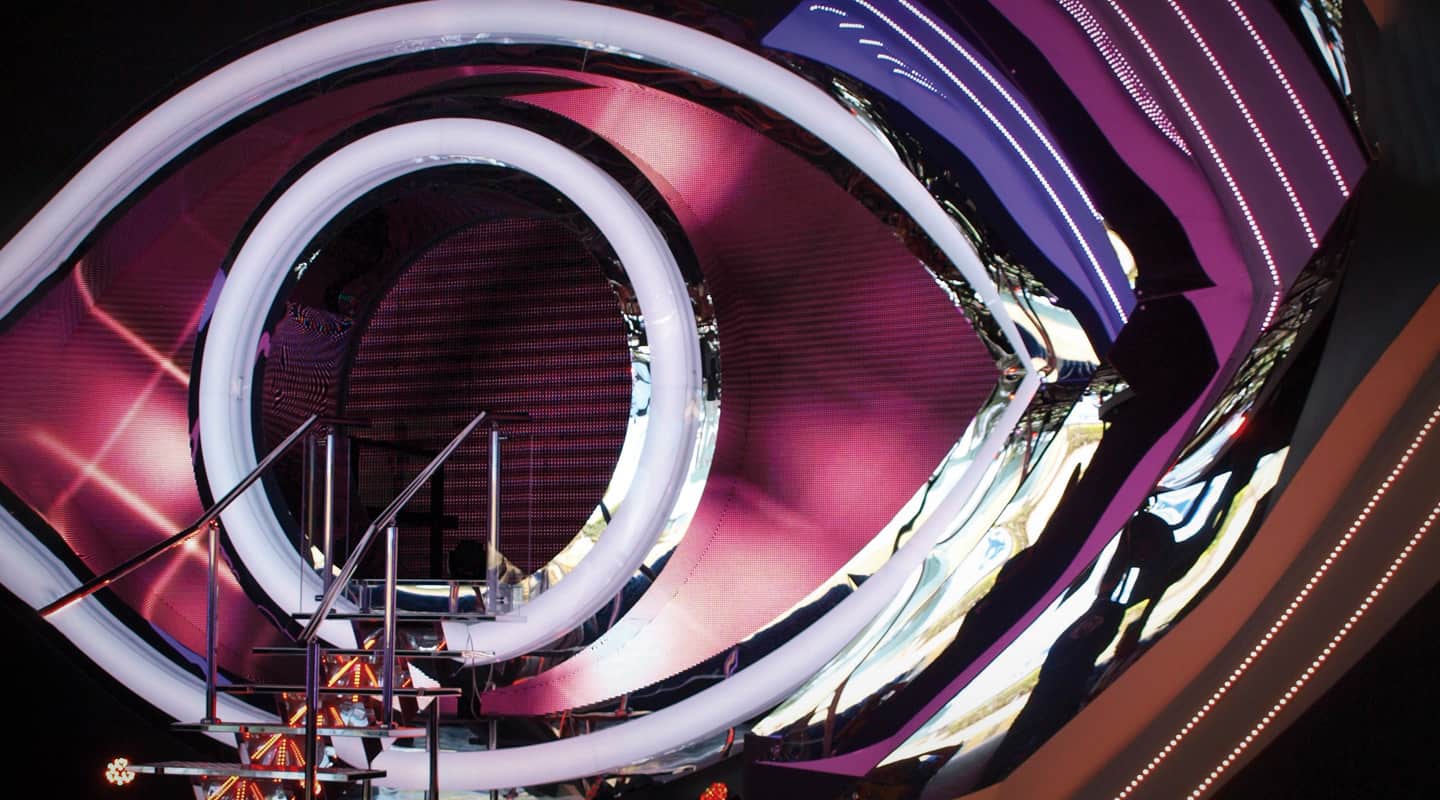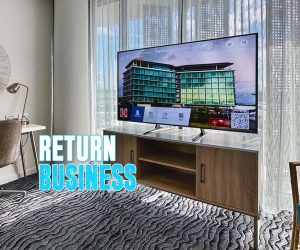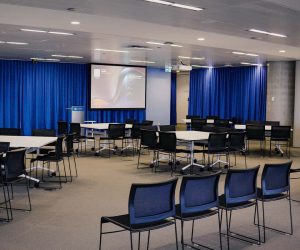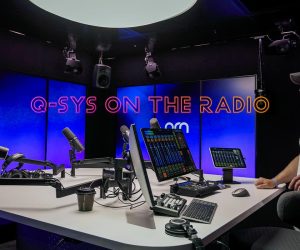
Someone Watching Over Me
Taking some of the big bother out of reality television.
Text:/ Guy Harrison
Well we all know the Big Brother franchise; the reality TV concept developed in the Netherlands that spread across the globe like a voyeuristic pathogen. The recipe goes: place 16 contestants in a nice house with no links to the outside world for 16 weeks. The contestants are required to do housework and Big Brother, an omnipresent god-like voice, assigns tasks to the contestant designed to test their teamwork and community mindedness. Each week the ‘housemates’ (personally, I prefer ‘inmates’) vote to decide which of their brethren gets ‘nominated’ for eviction. Once nominated, the viewing audience decide whether they stay or go. Eventually the last man/woman standing takes home the cash prize which this season is a cool $250,000. Debuting in Australia on the 10 Network in 2001, BB enjoyed eight Australian seasons before audiences dwindled and ultimately BB was dropped. Now in 2012 BB is back but this time it’s the Nine Network rolling the dice. It’s a social experiment on a grand scale and to keep Big Brother’s eyes always open there is a lot of tech doing the hard yards 24/7. So let’s take a peek.
WIRED. WEIRD
Set on the Gold Coast’s DreamWorld fun park, the Big Brother house is nestled away from the outside world and from any studio for that matter. With approximately 44 cameras, 35 mics, 40 comms panels and a house 300m away, reliable infrastructure is pivotal to the success of the show. Fibre is the backbone of the BB installation for both audio and video. There are 2 x 48-way single mode fibres between the house and control room for video and 2 x 6-way multimode fibres to run audio. Fibre was chosen as there are a lot of variables in the BB show. Sometimes the show’s host, Sonia Kruger, goes into the house and presents the show from there. On those occasions lots of signals have to go back to the house for monitoring, etc. Fibre allows for this versatility.
STUDIO LABYRINTH
The Big Brother studio facility is a labyrinth of rooms and technologies. The show by its very nature creates unique challenges. It is part OB for the Eviction and Nomination shows, complete with live studio audience. On the flip side, it can almost be likened to a non-stop sports event with loads of cameras and tons of audio sources which need to be constantly monitored, mixed then packaged into a daily show and two weekly shows. To make all this happen, the studio facility consists of House Control, Avid Video Editing Suites, an Audio Studio that services House Control, and another OB-style control room for the Live Eviction and Nomination shows. This studio utilises a VISRT’s Viz Engine and Viz Trio for graphics/real-time compositing, a DVS for slow-mo and replays and a couple of Sony Digi Beta tape machines. An audio studio based around a Lawo Mc56 digital console (more on this in a moment) handles the live OB shows’ audio needs.
The Big Brother house itself plays host to a plethora of technology as well. The 44-odd cameras (depending on the needs) total comprise five Sony HDC 2400s on pedestals and two on a rail system, 17 Hot Head cameras (four Camera Corps Q-Balls and 13 Sony HDC-X310). There are also eight static cameras and approximately seven infra-red cameras in the bedroom. The balance are ‘duty of care’ cameras monitoring some areas.

COHERENT TV
Creating some kind of coherent TV out of all this is a challenge. Michael Eveleigh BB’s Technical Manager explains: “The first thing to understand is that it’s simply not practical to record every camera 24/7 and put it all together in post. It would involve too much data and be an editing nightmare. So the way it’s handled is by having a control room that is outputting two streams. By two streams I mean that there are essentially two teams following the action at all times. Each can be recording a close-up cut stream and a wideshot iso (isolated feed) camera of whatever room they happen to be filming. These outgoing studio video streams are recorded to an EVS server then passed to an Avid Isis server for the video edit suites to craft the packages which will be used on the BB show. Of course, this is happening two-fold, so we can be creating two cut streams and two iso wideshots. We also have provision to record another two camera feeds. So with the limited number of rooms in the house this means we have it completely covered. Each of these video streams also has its own audio facility, so the audio is being mixed live and recorded with the video stream. This really speeds up the workflow.”
Other scenarios are covered by a combination of static, remote-controlled cameras and manned cameras. For instance when Big Brother assigns the housemates a task there can be as many as five cameramen on a combination of the pedestal and track cameras while also utilising shots from static and remote controlled cameras. With all this footage and a daily deadline the Avid video editing suites get a serious workout. There are nine suites used for the day-to-day editing and that can swell to 15 in peak times like the Big Brother launch and finale.
AUDIO CONSISTENCY
BB audio poses another set of its own unique challenges. I tracked down Salvadore Santos (Global TV’s head of audio and communications) to give me the lowdown. Salvadore explains: “Traditionally BB was running a lot of analogue signal. While there was a Reidel network system in place it was never fully utilised. The Riedel system uses a fibre network and by more fully exploiting it we have streamlined workflows, provide improved functionality and reliability. Part of the challenge here at BB is the myriad audio sources, communication systems and audio monitoring that all needs to function. The Riedel network which comprises two nodes (128×128 plus 32×32) and the Lawo Mc56 digital console provides us with great functionality.
“To illustrate what I’m talking about let’s take the housemates’ wireless Lectrosonics mics, as this will allow me to explain a common signal flow. Those mics hit the radio receivers and the analogue output signal then gets digitised and fed to the Lawo DSP core which provides some processing like compression and EQ. The signal is then fed to the Stream Audio studio’s Yamaha digital mixing consoles via MADI and also to the Riedel network via AES, making it available as a source on the network and therefore to any audio comms panel in the complex. This is pretty much the path for all audio sources. The beauty of this setup is the consistency in sound. All sources are getting the same processing every day. When the signal arrives at the Yamaha DM2000 and M7 digital consoles in the Stream Audio studio there is no processing needed, all that’s required is to set levels. I should also mention that those particular sources, the housemates wireless mics, are being recorded 24/7 to a hard disk-based system. This is just in case there is a problem with any of the stream audio mixes. Those files occasionally save the day.
“The Lawo Mc56 console is attached to the OB studio for the live shows (Nomination and Evictions) and handles all the broadcast audio associated with those shows on those days, but this is only half of its job. All day, every day, it is providing processing for almost all the house audio sources.”


ROUTING THE VOICE OF GOD
“As the Riedel fibre network is also managing all of our comms system it allows us to cleverly manage signals going the other way too. Like Big Brother himself for example. He has his own booth and his role is very diverse: one minute he’s speaking to the contestants in the Diary Room, then perhaps to the kitchen or lounge room. He may then need to discuss something with the BB Producer. In the past this was handled in the analogue domain with patchbays, normalling and multiple mics. Now, by utilising the Riedel facilities, life is much simpler. Big Brother now uses just one mic, an EV RE20, which gets digitised and sent to the Lawo console for some ‘God like’ processing, then onto the Riedel node. From there we can send it anywhere. So on his Riedel Artist 2000 series comms panel we set up some keys which he can press to route him to the different zones in the house. The other beauty of the Riedel system is that we can also get ‘states’ out of his panel, so we can see what buttons he is pressing. This allows for some confidence monitoring to ensure he’s getting it right. Now that the RE20 is on the network, we can also use it as his comms mic to speak to the director, for example. This can be programmed to another button on the Riedel Artist series 2000 comms panel that, when pressed, also turns off the Lawo effect processing. It’s really flexible.”
BACK TO FRONT MAYHEM
While there I couldn’t help but take a wander out onto the BB Live Show set. It’s quite eerie without the jeers of the audience. I had a quick poke and found another mini control room dedicated to the big LCD. Here I spotted a Black Magic ATEM 2 M/E production switcher. Out the back I also noted that a Vuepix LED curtain was providing the dazzle in the eye of BB and a bit of research turned up the fact that apparently ArKaos MediaMaster 3.0 with its new video mapper function is being used to send one vision stream to two video walls of different pitches (outer and inner eye) to get them to act as one screen. Nice effect!
When I arrived on site I wasn’t sure if the experience would bring out the voyeur in me, or simply a tech’s paranoia in regards to what could go wrong. As it happens, I have nothing but admiration for the technical team. Big Brother places some of the most unusual and arduous demands on equipment in the world of broadcast and there’s plenty of ingenuity on display. Just as well the technical department is switched on, even when the contestants aren’t.















RESPONSES